This is a list of films produced in Argentina in 1950:
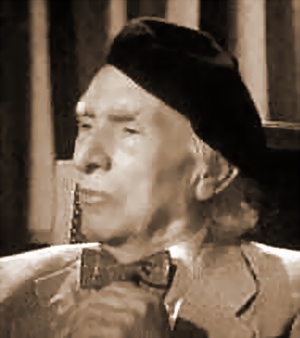
John Alton, born Johann Jacob Altmann, in Sopron, Kingdom of Hungary, was an American cinematographer of Hungarian-German origin. Alton photographed some of the most famous films noir of the classic period and won an Academy Award for the cinematography of An American in Paris (1951), becoming the first Hungarian-born person to do so in the cinematography category. He also worked as a director during the Golden Age of Argentine cinema.

Libertad Lamarque Bouza was an Argentine and Mexican actress and singer, became one of the most iconic stars of the Golden Age of cinema in both Argentina and Mexico. She achieved fame throughout Latin America, and became known as "La Novia de América". By the time she died in 2000, she had appeared in 65 films and six telenovelas, had recorded over 800 songs and had made innumerable theatrical appearances.
In art, neorealism refers to a few movements.

Hugo Geronimo Fregonese was an Argentine film director and screenwriter who worked both in Hollywood and his home country during the classical era of Argentine cinema.
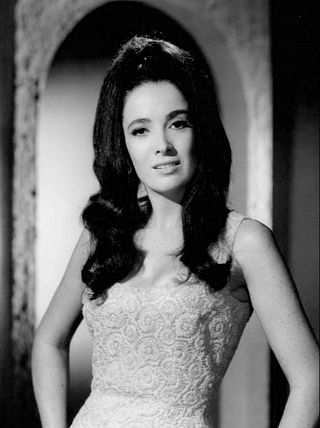
Marta Victoria Moya Peggo Burges, known professionally as Linda Cristal, was an Argentine-American actress. She appeared in a number of Western films during the 1950s, before winning a Golden Globe Award for her performance in the 1958 comedy film The Perfect Furlough.
This is an index to pages listing Argentine films ordered by year of release. For an A-Z list, see Category:Argentine films.
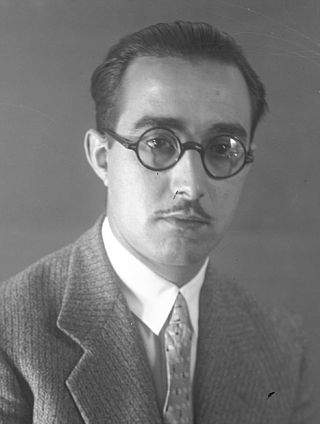
Román Viñoly Barreto was a Uruguayan-Argentine film director notable for his work during the classical era of Argentine cinema.
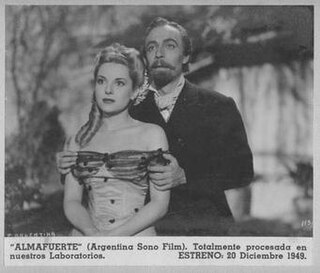
Almafuerte is a 1949 Argentine melodrama film of the classical era of Argentine cinema, directed by Luis César Amadori and written by Belisario García Villar. The film is a biography of the Argentine poet Pedro Bonifacio Palacios. The film starred Narciso Ibáñez Menta as Almafuerte and Pola Alonso.

Laura Ana "Tita" Merello was an Argentine film actress, tango dancer and singer of the Golden Age of Argentine cinema. In her six decades in Argentine entertainment, at the time of her death, she had filmed over thirty movies, premiered twenty plays, had nine television appearances, completed three radio series and had had countless appearances in print media. She was one of the singers who emerged in the 1920s along with Azucena Maizani, Libertad Lamarque, Ada Falcón, and Rosita Quiroga, who created the female voices of tango. She was primarily remembered for the songs "Se dice de mí" and "La milonga y yo".

Tulio Demicheli was an Argentine born Spanish film director, screenwriter and film producer notable for his work during the classical era of Argentine cinema.

Pierre Bruno Hugo Fontana, otherwise known as Hugo del Carril, was an Argentine film actor, film director and tango singer of the Golden Age of Argentine cinema.

Luis Moglia Barth was an Argentine film director and screenwriter, and one of the influential directors in the Golden Age of Argentine cinema. He directed some 30 films between 1927 and 1959, often screenwriting for his pictures. He died in Buenos Aires, aged 81.
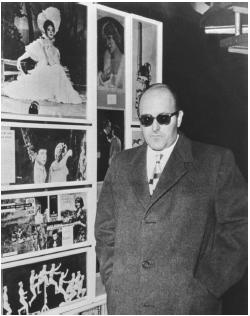
Leopoldo Torre Nilsson, also known as Leo Towers and as Babsy, was an Argentine film director, producer and screenwriter.

Luis Sandrini was a prolific Argentine comic film actor and film producer. Widely considered one of the most respected and most acclaimed Argentine comedians by the public and critics. He made over 80 appearances in film between 1933 and 1980, and was one of the most popular actors of the Golden Age of Argentine cinema.

School of Champions is a 1950 Argentine adventure drama film of the classical era of Argentine cinema, directed by Ralph Pappier, and starring George Rigaud, Silvana Roth, and Pedro Quartucci. It won the Silver Condor Award for Best Film, given by the Argentine Film Critics Association in 1951 for the best picture of the previous year.

The Marihuana Story is a 1950 Argentine film directed by León Klimovsky during the classical era of Argentine cinema. It was entered into the 1951 Cannes Film Festival.

Piantadino is a 1950 Argentine comedy film directed by Francisco Múgica during the classical era of Argentine cinema. The film is based on the cartoon character of the same name created by Adolfo Mazzone.

Emilio Vieyra, sometimes credited as Raúl Zorrilla, was an Argentine film director, actor, screenwriter and film producer, between 1950 and the 1990s. He was born in Buenos Aires, Argentina. He is mostly known for his action and horror films, which were usually grounded in the exploitation genre.

Lucas Demare was an Argentine film director, screenwriter, and film producer notable for his work during the classical era of Argentine cinema and beyond.

Bilateral relations between the Argentine Republic and the Republic of India, have existed for decades. Argentina has an embassy in Delhi and a Consulate General in Mumbai whilst India has an embassy in Buenos Aires. Both countries are members of G20, Group of 24 and Group of 77.